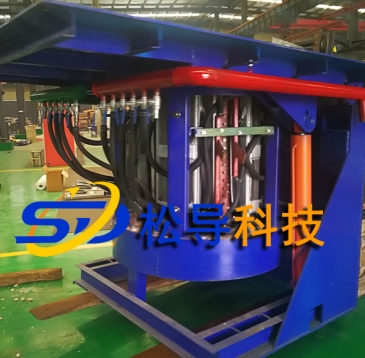- 22
- Feb
Irregular operation of induction melting furnace will cause serious accidents
Irregular operation of induction melting furnace will cause serious accidents
The дарстарында эрүү меш itself is a unity of the three systems of electricity, water, and oil. Irregular operations often lead to serious accidents. The following are strictly prohibited operations:

(1) Unqualified charge and flux are added to the furnace;
(2) Connect molten iron with defective or wet ladle lining;
(3) The furnace lining is found to be seriously damaged, and the smelting continues;
(4) Violent mechanical shock to the furnace lining;
(5) The furnace runs without cooling water;
(6) The molten iron or furnace body structure operates without grounding;
(7) Run under normal electrical safety interlock protection;
(8) When the furnace is not energized, carry out charging, ramming the solid charge, sampling, and adding
Batch alloy, temperature measurement, slag removal, etc. If some of the above-mentioned operations must be carried out with electricity, appropriate safety measures should be taken, such as wearing insulating shoes and wearing asbestos gloves.
The repair work of the furnace and its supporting electrical equipment must be carried out in the case of power failure.
When the furnace is working, it is necessary to carefully monitor the metal temperature, accident signal, cooling water temperature and flow rate during the smelting process. The furnace power factor is adjusted to above 0.9, and the three-phase or six-phase current is basically balanced. The outlet water temperature of the sensor, etc. does not exceed the maximum value specified in the design. The lower limit of the cooling water temperature is generally determined on the condition that no condensation occurs on the outer wall of the sensor, that is, the cooling water temperature is slightly higher than the ambient air temperature. If these conditions are not met, condensation will occur on the surface of the sensor, and the probability of sensor breakdown will increase greatly.
After the chemical composition and temperature of the molten iron meet the requirements, the power should be cut off and the iron should be tapped in time.
At the end of the smelting operation, the molten iron is exhausted. In order to prevent rapid cooling from forming large cracks in the furnace lining, appropriate slow cooling measures must be taken, such as adding asbestos plates to the crucible cover; the tap hole is blocked with insulation bricks and modeling sand; The gap between the furnace cover and the furnace mouth is sealed with refractory clay or modeling sand.
For crucible induction melting furnaces with larger capacity, after the smelting operation, try to avoid complete cooling of the furnace lining. The following methods can be used:
(1) Keep part of the molten iron in the furnace and energize at low voltage to keep the temperature of the molten iron at about 1300℃;
(2) Install an electric heater or use a gas burner in the crucible to keep the temperature of the crucible lining at 900~1100℃;
(3) After stopping the furnace, seal the furnace cover, and appropriately reduce the cooling water flow of the inductor, so that the crucible furnace lining is slowly cooled to about 1000 ℃, and then the specially poured cast iron block with the same shape as the crucible but smaller in size Hang into the furnace, and energize to heat to keep the temperature at about 1000 ℃. When the next furnace starts smelting operation, the ingot is used as a frit.
If the furnace needs to be shut down for a long time, there is no need to keep the crucible warm. In order to better keep the furnace lining under the condition of completely cooling water, after the molten iron in the crucible is exhausted, a frit is lifted in and the temperature rises to 800~1000℃, then the furnace cover is closed, the power is cut off, and the furnace Warm and cool slowly. Cracks will inevitably appear in the crucible lining after the furnace has been shut down for a long time. When it is re-melted and used, it must be carefully inspected and repaired. When melting, the temperature must be raised slowly so that the small cracks formed in the furnace lining can be closed by itself.
During the operation of the furnace, the condition of the furnace lining should be checked frequently to ensure safe production and improve the life of the furnace lining. Incorrect operation methods often result in shortening the life of the furnace lining, so the following common mistakes must be avoided:
(1) The furnace lining is not knotted, baked and sintered in accordance with the prescribed process;
(2) The composition and crystal form of the lining material do not meet the requirements, and contain more impurities
(3) The overheating temperature of the molten iron in the later stage of smelting exceeds the allowable range;
(4) Inaccurate operation and violent mechanical shock were used when loading solid materials or bridging due to discharge of furnace materials, causing serious damage to the crucible lining;
(5) After the furnace is shut down, the furnace lining is quenched and large cracks occur.
If the furnace is interrupted, the amount of cooling water for the sensor can be appropriately reduced, but it is not allowed to turn off the cooling water, otherwise the residual heat of the furnace lining can burn the insulation layer of the sensor. Only when the surface temperature of the furnace lining drops below 100°C, the cooling water of the inductor can be turned off.
